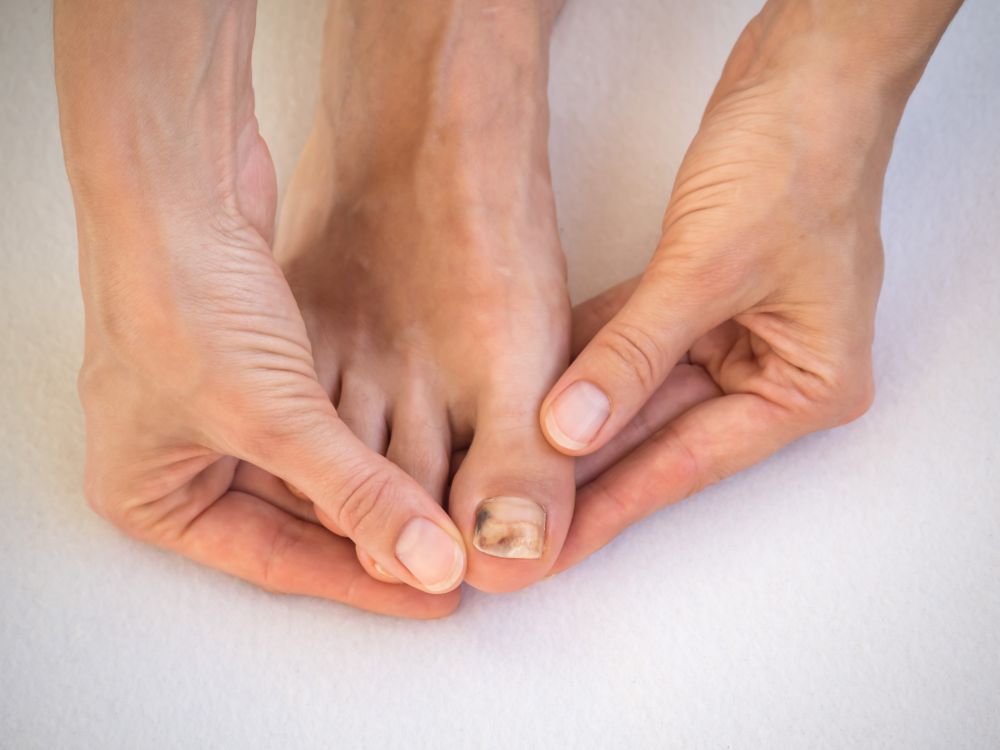Solutions
Nail fungus is a common fungal infection that affects the nails, causing discolouration, thickening, and brittleness.
Topical Medications
Manage Painful Infections of the Nails and Skin
While there are definitely cosmetic issues related to nail fungus, Albuquerque-area patients who bring this problem to Western Dermatology Consultants find that the condition is actually considered to be medical in nature. While fungus of this sort is usually not considered to be serious and may clear up on its own, nail fungus sometimes requires treatment with prescription medication—and even then, the condition can be a stubborn one that takes a long time to treat.
When left untreated, the fungus can spread to other nails and skin. In some cases, the condition can lead to lifelong nail damage, so a doctor’s assessment can be a helpful tool in preventing a long-term problem from getting out of control.
Contact Us
For more information on treating nail fungus, contact Albuquerque′s Western Dermatology Consultants. Call 505-855-5503 or schedule a free consultation online to learn more.
What Causes Nail Fungus?
Various types of fungal organisms or fungi cause nail fungus, but dermatophyte—which is the same fungus that causes athlete’s foot and ringworm—is usually to blame for visible nail fungus growths. Sometimes yeast and molds lead to fungus that affect the nails. In any case, the overgrowth of the fungi in damp, warm environments results in an infection.
There are certain factors that increase the risk of developing a fungal infection, including having diabetes, having a disease that causes poor circulation, being over the age of 65, wearing artificial nails, swimming in public pools, having an injury in the nail or the skin surrounding it, a weakened immune system, smoking, having athlete’s foot, spending a lot of time in the water, and having family members who are also infected.
What Are the Symptoms of Nail Fungus?
Fungal infections often begin on the end of the nail, and they are most common on the feet. The fungus gets into cracks in the nails or cuts in the skin. What starts as a small, light-colored white or yellow-brown patch beneath a nail on either your foot or hand can grow into a bigger problem of thickening, crumbling, and discoloration of the keratin that forms the nail.
The problem may be isolated or spread to several nails. Nail fungus may cause brittle or ragged nails, a slightly foul-smelling odor, a distorted shape, and a darker color when debris accumulates beneath a nail that has lifted slightly. Pieces of the nail or the entire nail might sometimes loosen or break off, causing further discomfort.
The effects of nail fungus may be strictly aesthetic—infected nails can grow yellow and misshapen—but can also cause discomfort and even pain to sufferers.
Which Treatment Options Are Available for Nail Fungus?
If nail fungus hasn’t improved after using at-home treatments or the symptoms are becoming worse, it may be best to see a dermatologist. Patients seek treatment for this condition if the appearance of their nails bothers them, or they’re experiencing pain. Antifungal nail cream may be recommended, though this isn’t always the most effective solution, and it might take up to a year to work.
Nail-softening cream is another option. It’s used to soften the nail so the infected area of it can be removed in a few weeks. Depending on the type of nail fungus a patient has, taking antifungal tablets for up to six months may also be recommended. If the nail fungus is severe enough, it may require the nail to be completely removed after a local anesthetic is used to numb the area. When the infection is finally cured, healthy nails should grow back at the base.
Contact Us
Get treatments for nail fungus in Albuquerque. Contact Western Dermatology Consultants at 505-855-5503 or schedule a free consultation to learn how to maintain healthy nails and skin.
What Can You Do to Prevent Nail Fungus?
Fungal infections are more likely to occur if your feet are constantly warm and damp. For example, people who wear sneakers for extended lengths of time may be more at risk. The infection can spread from fungi that are in or on the body already or from direct contact with someone who has the infection.
To prevent nail fungus, treat athlete’s foot before it can affect the nails, ensure that your feet are clean and dry, put on clean socks each day, wear flip-flops if you’re walking in public areas like the gym or pool, dump old shoes, avoid wearing tight-fitting shoes that cause your feet to become hot and sweaty, and don’t share towels, shoes, nail clippers, or other personal items.

